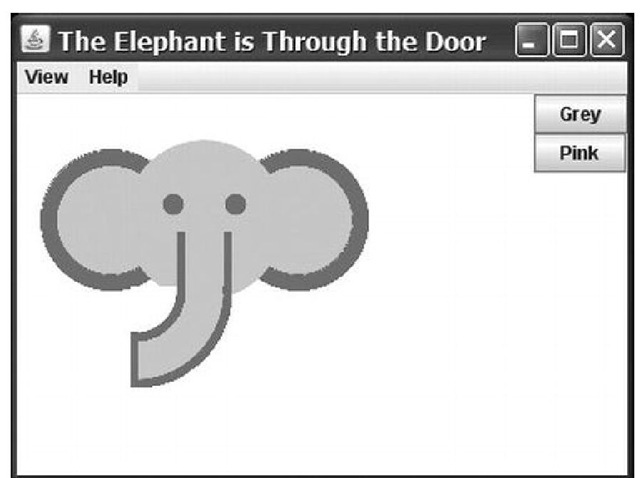JavaFX started life as the brainchild of Chris Oliver when he worked for a company named SeeBeyond. They had the need for richer user interfaces, so Chris created a language that he dubbed F3 (Form Follows Function) for that purpose. In the article, "Mind-Bendingly Cool Innovation" (cited in the Resources section at the end of this topic) Chris is quoted as follows. "When it comes to integrating people into business processes, you need graphical user interfaces for them to interact with, so there was a use case for graphics in the enterprise application space, and there was an interest at SeeBeyond in having richer user interfaces."
SeeBeyond was acquired by Sun, who subsequently changed the name of F3 to JavaFX, and announced it at JavaOne 2007. Chris joined Sun during the acquisition and continued to lead the development of JavaFX.
The first version of JavaFX Script was an interpreted language, and was considered a prototype of the compiled JavaFX Script language that was to come later. Interpreted JavaFX Script was very robust, and there were two JavaFX topics published in the latter part of 2007 based on that version. One was written in Japanese, and the other was written in English and published by Apress (JavaFX Script: Dynamic Java Scripting for Rich Internet/Client-Side Applications, Apress, 2007).
While developers were experimenting with JavaFX and providing feedback for improvement, the JavaFX Script compiler team at Sun was busy creating a compiled version of the language. This included a new set of runtime API libraries. The JavaFX Script compiler project reached a tipping point in early December 2007, which was commemorated in a blog post entitled "Congratulations to the JavaFX Script Compiler Team—The Elephant Is Through the Door." That phrase came from the JavaFX Script compiler project leader Tom Ball in a blog post, which contained the following excerpt.
An elephant analogy came to me when I was recently grilled about exactly when the JavaFX Script compiler team will deliver our first milestone release. "I can’t give you an accurate date," I said. "It’s like pushing an elephant through a door; until a critical mass makes it past the threshold you just don’t know when you’ll be finished. Once you pass that threshold, though, the rest happens quickly and in a manner that can be more accurately predicted."
A screenshot of the silly, compiled JavaFX application written by one of the authors,for that post is shown in Figure 1-1, demonstrating that the project had in fact reached the critical mass to which Tom Ball referred.
Figure 1-1. Screenshot for the "Elephant Is Through the Door" program
Much progress continued to be made on JavaFX in 2008:
• The NetBeans JavaFX plug-in became available for the compiled version in March 2008.
• Many of the JavaFX runtime libraries (mostly focusing on the UI aspects of JavaFX) were rewritten by a team that included some very talented developers from the Java Swing team.
• In July 2008, the JavaFX Preview SDK was released, and at JavaOne 2008 Sun announced that the JavaFX 1.0 SDK would be released in fall 2008.
• On December 4, 2008, the JavaFX 1.0 SDK was released. This event increased the adoption rate of JavaFX by developers and IT managers because it represented a stable codebase.
• In April 2009, Oracle and Sun announced that Oracle would be acquiring Sun. The JavaFX 1.2 SDK was released at JavaOne 2009.
• In January 2010, Oracle completed its acquisition of Sun. JavaFX 1.3 SDK was released in April 2010, with JavaFX 1.3.1 being the last of the 1.3 releases.
At JavaOne 2010, JavaFX 2.0 was announced. The JavaFX 2.0 roadmap was published by Oracle on the Web page noted in the Resources section below, and includes items such as the following.
• Deprecate the JavaFX Script language in favor of using Java and the JavaFX 2.0 API. This brings JavaFX into the mainstream by making it available to any language (such as Java, Groovy, and JRuby) that runs on the JVM.
• Make the compelling features of JavaFX Script, including binding to expressions, available in the JavaFX 2.0 API.
• Offer an increasingly rich set of UI components, building on the components already available in JavaFX 1.3.
• Provide a Web component for embedding HTML and JavaScript content into JavaFX applications.
• Enable JavaFX interoperability with Swing.
• Rewrite the media stack from the ground up.
JavaFX 2.0 was released at JavaOne 2011, and has enjoyed a greatly increased adoption rate due to the innovative features articulated previously. Now that you’ve had the obligatory history lesson in JavaFX, let’s get one step closer to writing code by showing you where some examples, tools, and other resources are.

